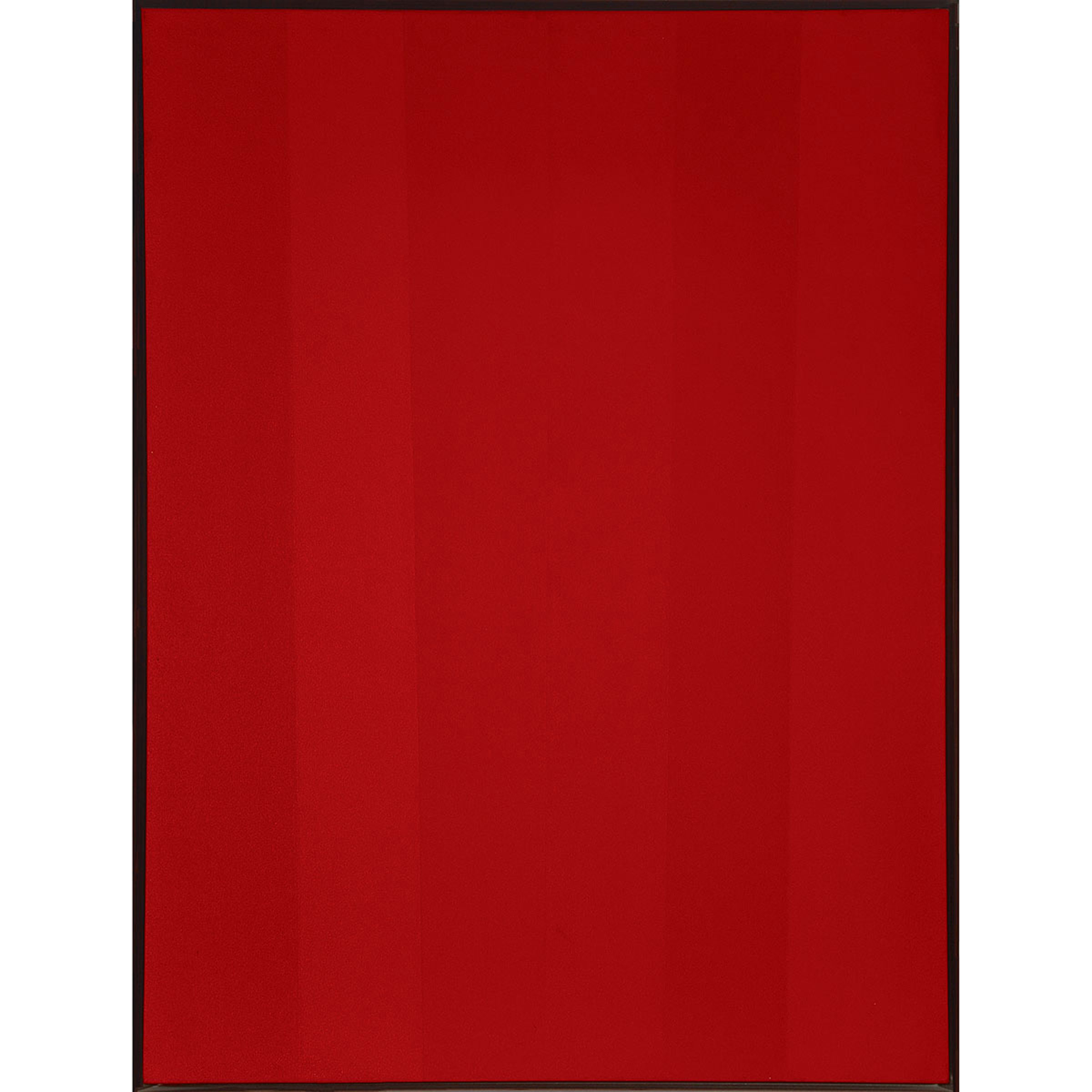Lot 68
GUIDO MOLINARI, R.C.A

Additional Images

Provenance:
Paul Kuhn Gallery, Calgary
Private Collection, Toronto
Note:
For decades, Guido Molinari (1933-2004) was the driving force in Quebec abstract art. In 1956 he joined the Non-Figurative Artists Association of Montreal and was a founder of Les Plasticiens. They were dedicated to a cool, rational non-expressionistic aesthetic with special affection shown towards the example and achievements of the striped paintings of American, Barnett Newman.
Molinari’s signature style featured primarily vertical stripes. The optical vibration at the intersection of the adjoining bands of colour caused uncanny perceptual quandaries for the viewer. Intellectually, one could discern the governing system of the placement of colours, yet perceptually the effect alluded our ability to hold the result into a stable gestalt. These optical paintings were the mainstay of his early career and generated many exhibitions wordwide.
Yet by the 1970s he began to experiment with taming down the jarring effect of placing vastly different hue stripes adjacent to one another. Instead, he gravitated towards near monochromes, where each stripe was initially virtually indistinguishable from its neighboring hue. These celebrated minimalistic offerings are referred to as his Quantifier paintings. His near monochromes remain relevant and celebrated to this day; one was showcased in Entangled: Two Views of Contemporary Canadian Painting (Vancouver Art Gallery, December 2017). It was presented as a continuing inspiration to a new generation of Quebec geometric painters.
Molinari was the dominant force in Quebec abstraction through his art, his theoretical writings and his exemplary impact upon generations of young artists as a professor at Concordia University. His works are almost always on view in the permanent collection installations of Canada’s leading art museums. Key art historical texts devote extensive sections to chronicle his impact. His works have been avidly acquired by discerning private and corporate collectors and are included in the collections of every significant art museum in Canada and elsewhere.



